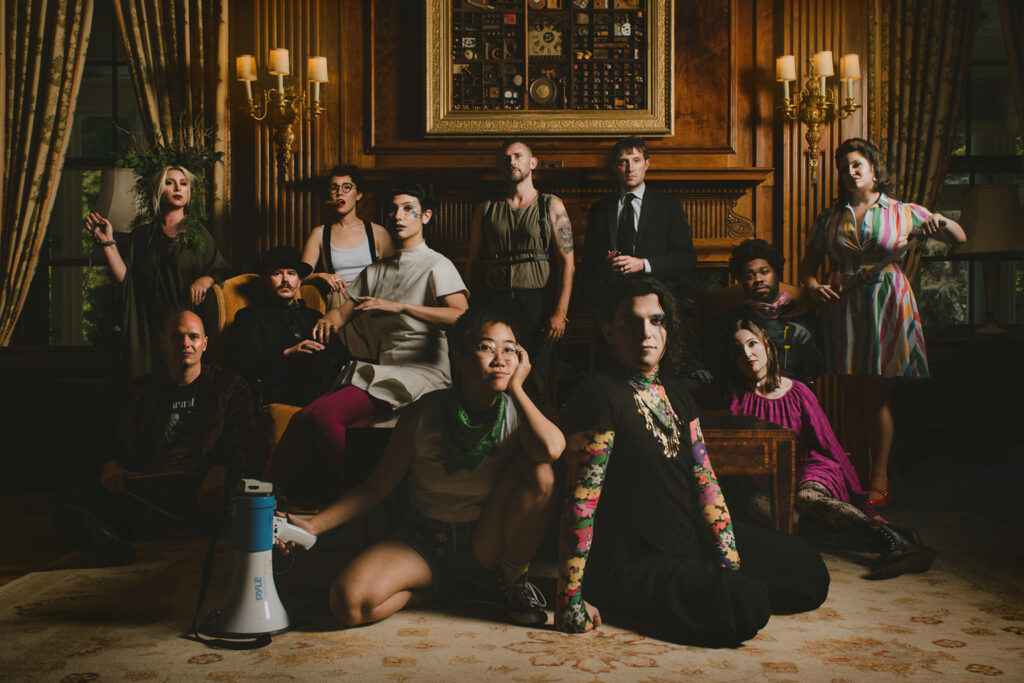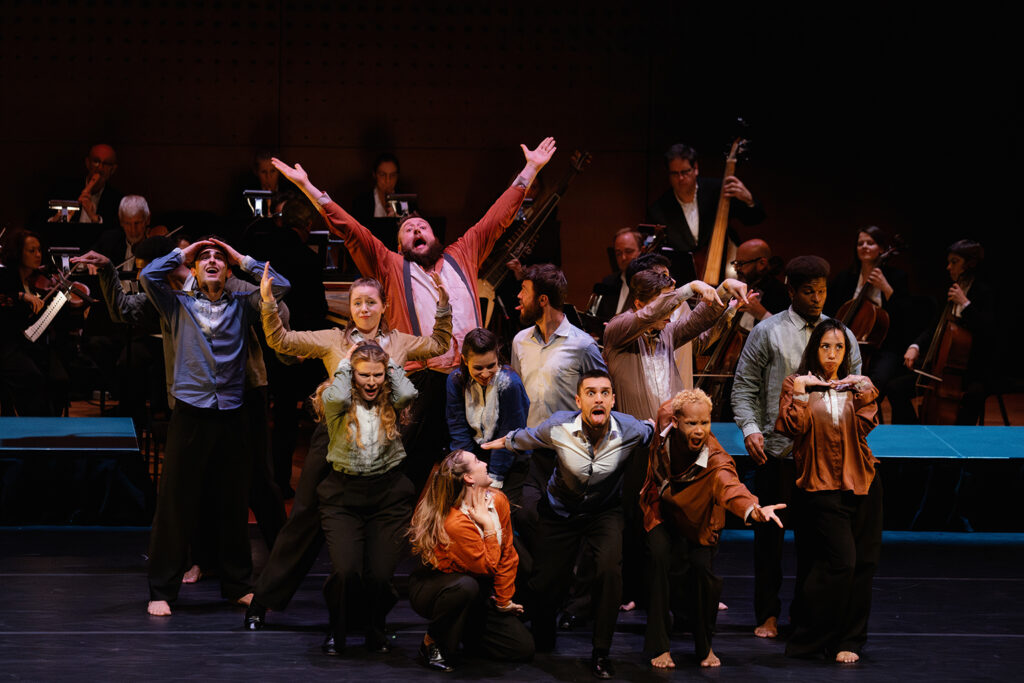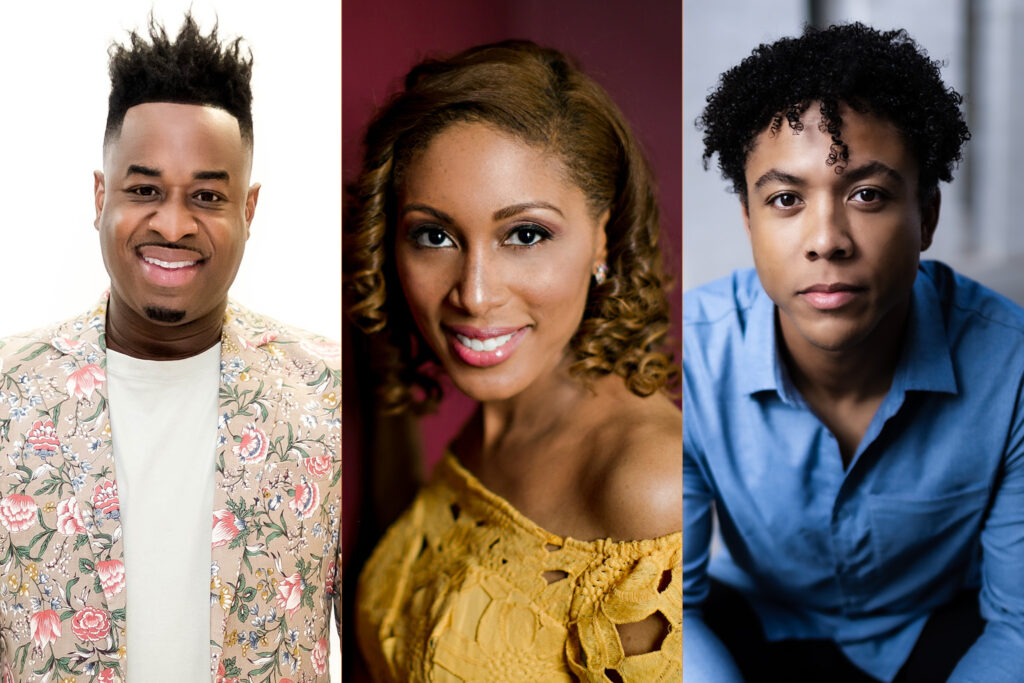
- This event has passed.

Livestream
Dashon Burton, bass-baritone
David Fung, piano
Sunday March 21, 2021 @ 3:00pm - March 23
$15, $30, $45 / Members Free WATCH THE LIVESTREAM! Spring Subscription / View all 8 Spring Livestreams for $80
Reserve NowOverview
Sunday March 21, 2021 @ 3:00pm – March 23
The livestream will be available to view for 48 hours. From Sunday, March 21 @ 3:00pm – Tuesday, March 23 @ 5:00pm.
An original member of the innovative Grammy-winning vocal ensemble Roomful of Teeth, bass-baritone Dashon Burton is known for his “nobility and rich tone” (The New York Times). Showcasing his versatility, Burton’s recital with pianist David Fung combines Schumann’s complete Dichterliebe with works by John Dowland, Charles Brown, Florence Price, Margaret Bonds, Ernest Charles and William Bolcom, and a set of spirituals.
Following the concert, there will be a Q&A with Dashon Burton and David Fung, with an opportunity for the audience at home to ask questions; moderated by Caramoor’s Artistic Director, Kathy Schuman.
Artists
- Dashon Burton, bass-baritone
- David Fung, piano
Program
- Dowland / In This trembling Shadow
- Schumann / Dichterliebe, Op. 48 (view the Texts & Translations)
- Brown / Song without words
- Price / Night
- Bonds / Three Dream Portraits
- Spiritual / Sometimes I feel like a motherless child
- Burleigh / I’ve Been in the storm
- Spiritual / Crucifixion
- Spiritual / My Lord, What a Morning
- William Bolcom / Blue
- Charles / When I Have Sung My Songs
Learn More About the Artists
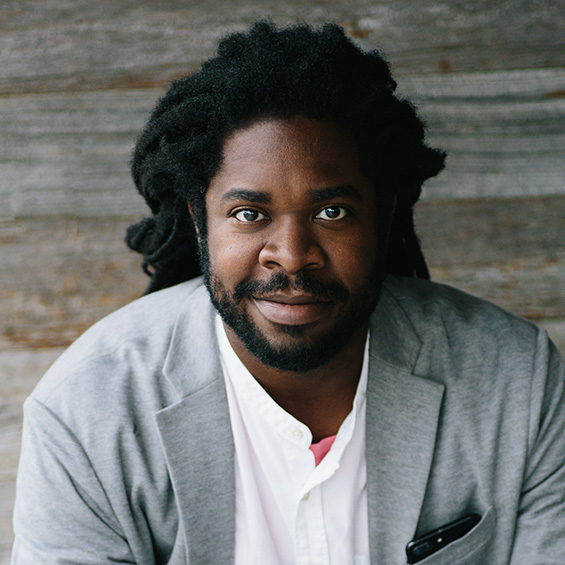 Dashon Burton, bass-baritone
Dashon Burton, bass-baritone
Artist Website / Watch / Listen
Bass-baritone Dashon Burton has established a vibrant career in opera, recital, and with orchestra. In key elements of his repertoire — Bach’s Passions and the B Minor Mass, Mendelssohn’s Elijah, Beethoven 9, the Brahms Requiem, Handel’s Messiah, and Mozart’s Requiem — Dashon is a frequent guest with the major orchestras of the United States, Europe, and Japan.
In the 2019–20 season, he performed these works and others with the Minnesota and National Arts Centre Orchestras, the St. Louis and San Francisco Symphonies, the New York Philharmonic, and the St. Paul Chamber Orchestra. A frequent guest of the Cleveland Orchestra, this season Burton sings Michael Tilson Thomas’ Rilke Songs there, led by the composer. In the fall, Dashon sings the world premiere of Caroline Shaw’s The Listeners (a part written by Shaw specifically for Burton), first with the Philharmonia Baroque and Nicholas McGegan, and then with Grant Llewellyn and the North Carolina Symphony.
Opera engagements include Sarastro in Die Zauberflöte in Dijon and Paris, and Jupiter in Rameau’s Castor et Pollux with Les Talens Lyriques; Strauss’ Salome at the Salzburg Festival (led by Franz Welser-Möst in a production by Romeo Castellucci), and Peter Sellars’s production of Claude Vivier’s Kopernikus, un ritual de mort at Paris’ Théatre de la Ville.
Burton continues as a Resident Artist this season with San Francisco Performances, and sings recitals throughout the US, including a program based on works from his album Songs and Struggles of Redemption; We Shall Overcome, singled out by The New York Times as “profoundly moving … a beautiful and lovable disc.” Dashon is an original member of the groundbreaking vocal ensemble, Roomful of Teeth, with whom he won a Grammy for their recording of Caroline Shaw’s Pulitzer-Prizewinning Partita for 8 Voices. In March of 2021, Burton won his second Grammy, this time for Best Classical Solo Vocal Album for Dame Ethyl Smyth’s The Prison with The Experiential Orchestra on Chandos.
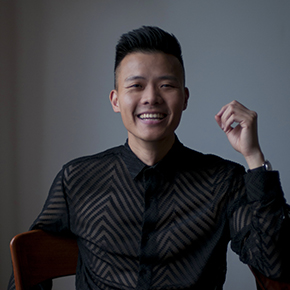 David Fung, piano
David Fung, piano
Artist Website / Watch / Listen
Praised for his “ravishing and simply gorgeous” performances in the The Washington Post, pianist David Fung is widely recognized for interpretations that are elegant and refined, yet intensely poetic and uncommonly expressive. Declared a Rising Star by BBC Music Magazine, Mr. Fung regularly appears with the world’s premier ensembles including the Cleveland Orchestra, the Detroit Symphony, the Israel Philharmonic, the Los Angeles Philharmonic, the National Orchestra of Belgium, the San Diego Symphony, and the San Francisco Symphony, as well as the major orchestras in his native country of Australia, including the Melbourne Symphony, the Queensland Symphony Orchestra, and the Sydney Symphony Orchestra. In the 2019-20 season, Mr. Fung was a featured guest artist with the Detroit Symphony Orchestra in their opening subscription weekend celebrating the Orchestra Hall Centennial and was also invited to replace Andre Watts with the Atlanta Symphony Orchestra performing Ravel’s Left-Hand Concerto. Other highlights of the season include performances at Seattle Town Hall, Eastman Presents, and a collaboration with the Brentano Quartet at Yale University and Carnegie Hall. In the 2020-21 season, Mr. Fung headlines the WQXR Pride Celebrations in New York City. Other highlights were to include performances with the Las Vegas Symphony, Niagara Symphony, and at Princeton University. Mr. Fung’s highly acclaimed debut with the Cleveland Orchestra at the Blossom Music Festival was “everything you could wish for” (Cleveland Classical), and he was further praised as an “agile and alert interpreter of Mozart’s crystalline note-spinning” (The Plain Dealer). In the following week, he performed Rachmaninoff’s Rhapsody on a Theme of Paganini at the Beijing National Stadium for their Olympic Summer Festival. He also performed the West Coast Premiere of Chen Qigang’s Piano Concerto, “Er Huang”, with the San Francisco Symphony. Other recent solo engagements include performances with the Albany Symphony, Arkansas Symphony, Kitchener-Waterloo Symphony, Israel Symphony, Marin Symphony, the National Taiwan Symphony, New Japan Philharmonic, Nordwestdeutsche Philharmonie, Southwest Florida Symphony, Sun Valley Symphony, Symphony Tacoma, Vallejo Symphony, Tampere Philharmonic, and Xiamen Philharmonic. An incisive interpreter of Mozart and Bach, Mr. Fung has collaborated with the Israel, Los Angeles, Melbourne, Orpheus, and Saint Paul Chamber Orchestras. As a recitalist and chamber musician, Mr. Fung is a frequent guest artist at prestigious festivals and venues worldwide. Festival highlights include performances at the Aspen Music Festival, Blossom Music Festival, Brussels Piano Festival, Caramoor, Edinburgh International Festival, Hong Kong Arts Festival, the Ravinia Festival, Tippet Rise, and Yeosu International Music Festival. At his Edinburgh International Festival debut, the Edinburgh Guide described Mr. Fung as being “impossibly virtuosic, prodigiously talented… and who probably does ten more impossible things daily before breakfast.” In recent seasons, he has been presented in recital by Washington Performing Arts at the Kennedy Center, Lincoln Center’s Great Performers, the Louvre Museum, the Palais des Beaux-Arts in Brussels, the National Concert Hall in Taiwan, and the Zürich Tonhalle. In 2015, he gave a recital tour in China at all the major venues including the Beijing Concert Hall, Shanghai Oriental Art Center, Guangzhou Opera House, and the Tianjin Grand Theater. Mr. Fung garnered international attention as a prizewinner in both the Queen Elisabeth International Music Competition in Brussels and the Arthur Rubinstein Piano International Masters Competition in Tel Aviv. In Tel Aviv, he was further distinguished by the Chamber Music and Mozart Prizes, awarded in areas in which Mr. Fung has a passionate interest. The first piano graduate of the prestigious Colburn Conservatory in Los Angeles, Mr. Fung also studied at the Hannover Hochschule für Musik and the Yale School of Music. His teachers include Margaret Hair, Claude Frank, Peter Frankl, John Perry, and Arie Vardi. Mr. Fung is on faculty at the University of Georgia and is a Steinway Artist.
Program Notes
About the Music.
At a Glance
A potpourri of art songs and spirituals, the program that Dashon Burton and Lindsay Garritson have chosen is nicely balanced between the Old World and the New. It opens with a piece by John Dowland, a peerless songwriter and virtuoso lutenist who transformed the conventional themes of Elizabethan poetry into miniature lyrical masterpieces.
Schumann similarly epitomized the spirit of the Romantic era in his affinity for small-scale musical forms and lyrical utterances; his impulsive genius found its most distinctive expression in short character pieces for the piano and art songs, such as the 16 ruminations on unrequited love that comprise his song cycle Dichterliebe.
The middle section of the program highlights the diverse musical heritage of Black Americans. In addition to a group of traditional “spiritual songs,” Burton and Garritson will perform a wordless vocalise inspired by the artistry of the gospel-blues singer and guitarist Blind Willie Johnson, as well as four songs in the European concert-hall tradition written by two singularly gifted women, Florence Price and Margaret Bonds. Like other marginalized African-American composers, until recently both were largely written out of the history of 20th-century classical music: the dual impact of sexism and racism helped ensure that most of Price’s music remained unpublished for decades after her death.
Rounding out the recital are a pair of songs by (white, male, American) composers who deftly straddled the none-too-clear line between classical and popular music.
The Program
JOHN DOWLAND
(1563-1626)
In This Trembling Shadow (1784)
Dowland was the greatest songwriter of the Elizabethan age. A master lutenist, he served the Danish crown in that capacity but failed to win a position at the English court until he was nearly 50. The repeated rejections embittered the composer and may be one source of his famously melancholy disposition. Many of Dowland’s songs deal with conventional themes — love, the joys of springtime, and so on — but a significant number are much darker, even morbid, in tone. The tortured chromaticism of In This Trembling Shadow is emblematic of the song’s spiritual intensity, culminating in praise of God’s “boundless power.”
ROBERT SCHUMANN
(1810-1856)
Dichterliebe, Op. 48 (1862) View the texts & translations.
Schumann’s prolific output of lieder — he wrote more than 400 songs in the course of his career — was concentrated in two prodigious bursts of productivity at the beginning and end of the 1840s. In the 17 months between May 1840 and September 1841 alone — the period he called his Liederjahr, or “song year” — he published no fewer than eight sets of songs and composed dozens more, including the 16 short lyrics to texts by Heinrich Heine that are collectively titled Dichterliebe (Poet’s Love). Like virtually all the music Schumann composed in the 1830s and early 1840s, Dichterliebe was in part a cryptic love letter to Clara Wieck, even if the cycle’s overarching theme of unrequited love scarcely applied to them. Although the young lovers were forbidden to see each other by Clara’s domineering father, who remained obdurately opposed to his underaged daughter’s marriage, they had long since plighted their troths in secret and would become husband and wife a few weeks later, in September 1840.
Dichterliebe was part of Schumann’s long-term plan to achieve financial independence — and perhaps a measure of legitimacy in the eyes of his future father-in-law — by achieving recognition in a popular genre for which there was a brisk demand among both amateur and professional musicians. Much like Schumann himself, one supposes, the nameless titular poet of Dichterliebe careens wildly between moonstruck rapture, steely defiance, and self-pitying despondency. The cycle’s subliminal dramatic narrative — which necessarily involves a good deal of reading between the lines of Heine’s deceptively simple verses — guides protagonist and listener along a winding path from infatuation to disillusionment. Schumann presents the poems in more or less the same sequence as they first appeared in Heine’s Lyrisches Intermezzo (Lyrical Intermezzo) of 1823, opening with the budding springtime romance of Im wunderschönen Monat Mai and closing with Die alten, bösen Lieder, in which the long-suffering poet sternly resolves to bury his dreams along with his “old, evil songs.”
In keeping with his stated goal as a lieder composer of “produc[ing] a resonant echo of the poem and its smallest features,” Schumann garbs Heine’s no-frills poetic designs in equally unpretentious musical dress — mostly simple strophic or symmetrical ABA song forms, with contrasting midsections. Several songs end with ruminative piano solos that hint at a world of feeling where the poet’s words leave off. Schumann’s accompaniments, with their imaginatively varied figurations and harmonic twists, deftly capture the mood of each song and highlight the dramatic contrasts between them.
Thus, the breathless ecstasy of Die Rose, die Lilie, a sunny catalogue of garden delights, gives way to tender languor in Wenn ich in deine Augen she, as the lovesick poet rests his head on his sweetheart’s breast. The driving, grimly determined eighth-note pulse of Ich grolle nicht — deservedly the most popular song in the cycle — dissolve into fluttery palpitations in Und wüßten’s die Blumen, while the giddily dancing rhythms of Das ist ein Flöten und Geigen are juxtaposed with the trudging, grief-laden phrases of Hör’ ich das Liedchen klingen. Before bitterly forswearing his dream of happiness in the final song, the poet passes from stark despair (Ich hab’ im Traum geweinet) through transient mirages of hope (Allnächtlich im Traume) and fairy-tale bliss (Aus alten Märchen winkt es). Yet Schumann closes the cycle on an uplifting note, with a long, rhapsodic piano postlude whose gently cascading arpeggios echo the consolatory gestures of the 12th song, Am leuchtenden Sommermorgen.
CHARLES F. BROWN
(1940-)
BLIND WILLIE JOHNSON
(1897-1945)
Song Without Words (1907)
“Dark was the night, cold was the ground on which my Lord was laid”: so begins a popular 19th-century hymn, originally alluding to the crucifixion. In the early 20th century, the Texas bluesman and gospel singer Blind Willie Johnson transformed Dark Was the Night into a wordless African-American lament, accompanying himself on bottleneck guitar in a style known as “unison moaning.” Charles F. Brown, another Texas-born gospel songwriter, captured the essence of Johnson’s hummed wailings in this soulful vocalise for voice and piano, replete with swooning blue notes and soft, shimmering, delicately evocative harmonies.
FLORENCE PRICE
(1887-1953)
Night
As an African-American woman in the field of classical music, Florence Price was doubly challenged. “I have two handicaps — those of sex and race,” she wrote matter-of-factly to the conductor Serge Koussevitsky in 1943. Although the Chicago Symphony had premiered the first of her four symphonies 10 years earlier, and her music was championed by Marian Anderson and other singers, Price was forced to eke out a living by composing popular songs, teaching piano, and making arrangements for a Chicago radio station. Night, among her best and most frequently performed songs, is characterized by its polychromatic harmonies and French-flavored vocal line, set against a rocking accompaniment.
MARGARET BONDS
(1913-1972)
Three Dream Portraits
A pupil and ally of Florence Price in Chicago, Margaret Bonds cultivated a long and fruitful partnership with Langston Hughes. Over some four decades, they collaborated on a wide variety of musical projects, including a Christmas cantata titled The Ballad of the Brown King and a theatrical version of the poet’s Shakespeare in Harlem. In the late 1950s, at the height of the civil rights movement, Bonds set three poems from Hughes’s 1932 collection The Dream Keeper, in which he wrote movingly of black Americans’ need to protect their “heart melodies” from the “too-rough fingers of the world.” By turns raging and resigned in mood, the Three Dream Portraits capture the pain and pride that commingle in Hughes’s poetry, ending in his Whitmanesque declaration that “I, too, am America.”
TRADITIONAL
Sometimes I Feel Like a Motherless Child
The roots of the African-American spiritual run deeper than the arrival of the first enslaved Africans in North America in 1619. As Hall Johnson wrote in his classic study of the spiritual, while the early European settlers “thought of music only for church worship and other special occasions,” the African slaves “came from a long tradition of functional music in daily use in lieu of the written word.” One of the most eloquent and powerful specimens of the genre, Sometimes I Feel Like a Motherless Child highlights what the late Moses Hogan called the “intertwined strands of sorrow and hope” that course throughout the songs of slaves and their descendants.
HENRY T. BURLEIGH
(1866-1949)
I’ve Been in the Storm
No one did more to bring the vernacular spiritual into the mainstream of classical music than Henry T. Burleigh. One of more than 150 African Americans who studied at New York’s National Conservatory of Music during the brief and enlightened directorship of Antonín Dvořák in the early 1890s, he is credited with introducing the Czech composer to the indigenous American music that Dvořák incorporated into his “New World” Symphony. Burleigh went on to become a distinguished composer in own right. Typical of his sensitive concert arrangements is I’ve Been in the Storm, with its stoical minor-key refrain pierced by faint flickerings of hope.
TRADITIONAL
Crucifixion
My Lord, What a Mornin’
This pair of classic spirituals exemplify what the sociologist W. E. B. DuBois called “sorrow songs.” Lamentation is central to Crucifixion, with its dolorous, lightly syncopated refrain “And he never said a mumbalin’ word.” But the apocalyptic imagery of My Lord, What a Mornin’ is equally sorrowful, as suggested by the alternative spelling “mournin’.” For DuBois, the spiritual was fundamentally an expression of faith: “Through all the sorrow of the Sorrow Songs there breathes a hope — a faith in the ultimate justice of things. The minor cadences of despair change often to triumph and calm confidence. Sometimes it is faith in life, sometimes a faith in death, sometimes assurance of boundless justice in some fair world beyond.”
WILLIAM BOLCOM
(b. 1938)
Cabaret Songs, Vol. IV: Blue
William Bolcom was in the vanguard of younger American composers who parted ways with the European-dominated new-music mainstream in the 1960s and 1970s. A card-carrying serialist in his early years, he parlayed his love of popular songs, ragtime, and other vernacular musics into a productive career as both composer and pianist. Blue is the last of two dozen Cabaret Songs that Bolcom wrote over more than 30 years with his long-time wordsmith, Arnold Weinstein. Smart and sophisticated, yet at the same time artless and unabashedly sentimental, the music and lyrics are perfectly matched.
ERNEST CHARLES
(1895-1984)
When I have sung my songs
Many people discovered — or rediscovered — this evergreen ballad when Meryl Streep sang it at the close of her recent cinematic salute to the inimitable Florence Foster Jenkins. But generations of singers have made Ernest Charles’s affecting love song their own, from Jussi Björling and Rosa Ponselle to Elizabeth Connell and Renée Fleming. A native of Minnesota, Charles briefly pursued a performing career on Broadway before enjoying a longer run as a composer of popular art songs in a crowd-pleasingly traditional vein. Short and uncloyingly sweet, When I have sung my songs has long been popular as an encore piece.
— Harry Haskell
This young American singer is the real thing — a bass-baritone with a rich, rounded voice, faultless diction and a natural, expressive style
Chicago Classical Review
Livestream Access
The livestream will be available to view for 48 hours.
Questions? Contact the Box Office at 914.232.1252 or boxoffice@caramoor.org.
Forgot your password? If you cannot remember your password, you can reset your password, or our Box Office will be able to assist you with your log-in credentials.
All artists and dates are subject to change and cancellation without notice as we work closely with local health experts and officials. Please note that all performances and livestreams at Caramoor are in compliance with current New York State Regulations.
We would like to thank our media partners for their support:


